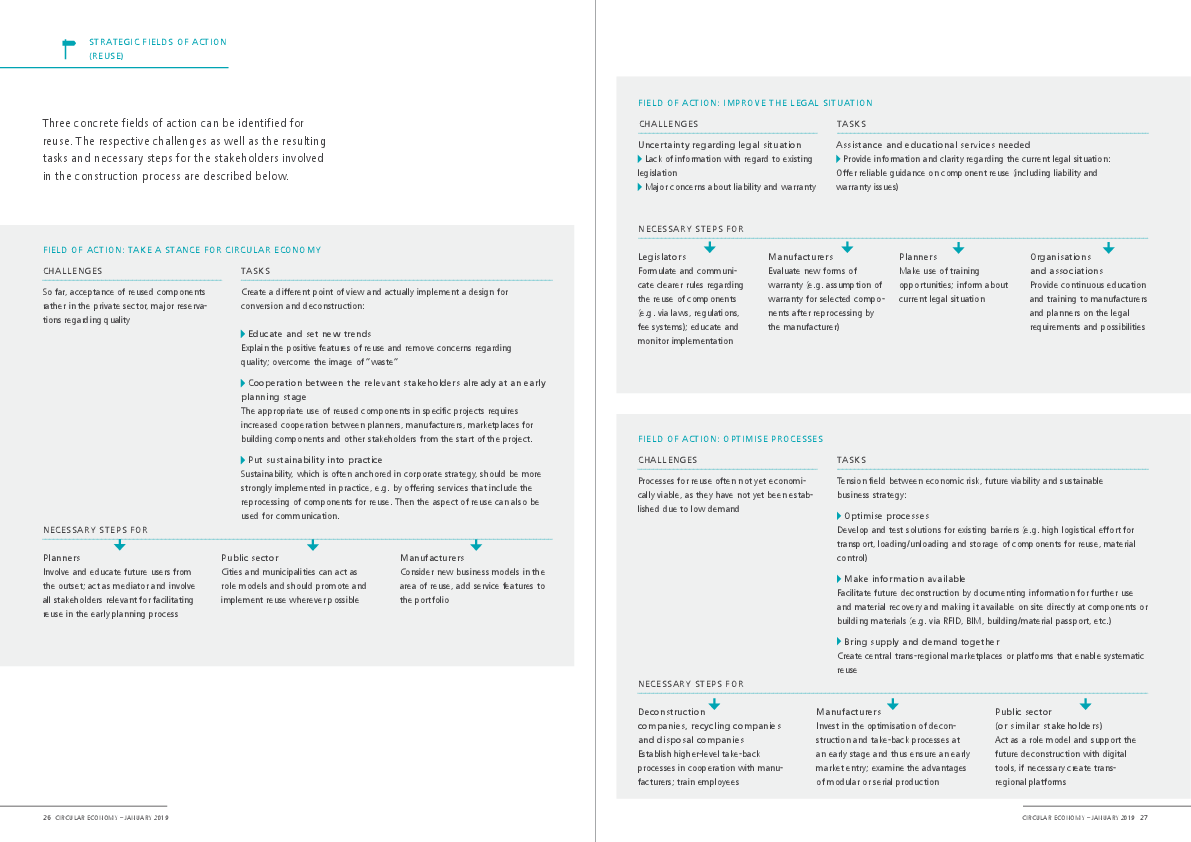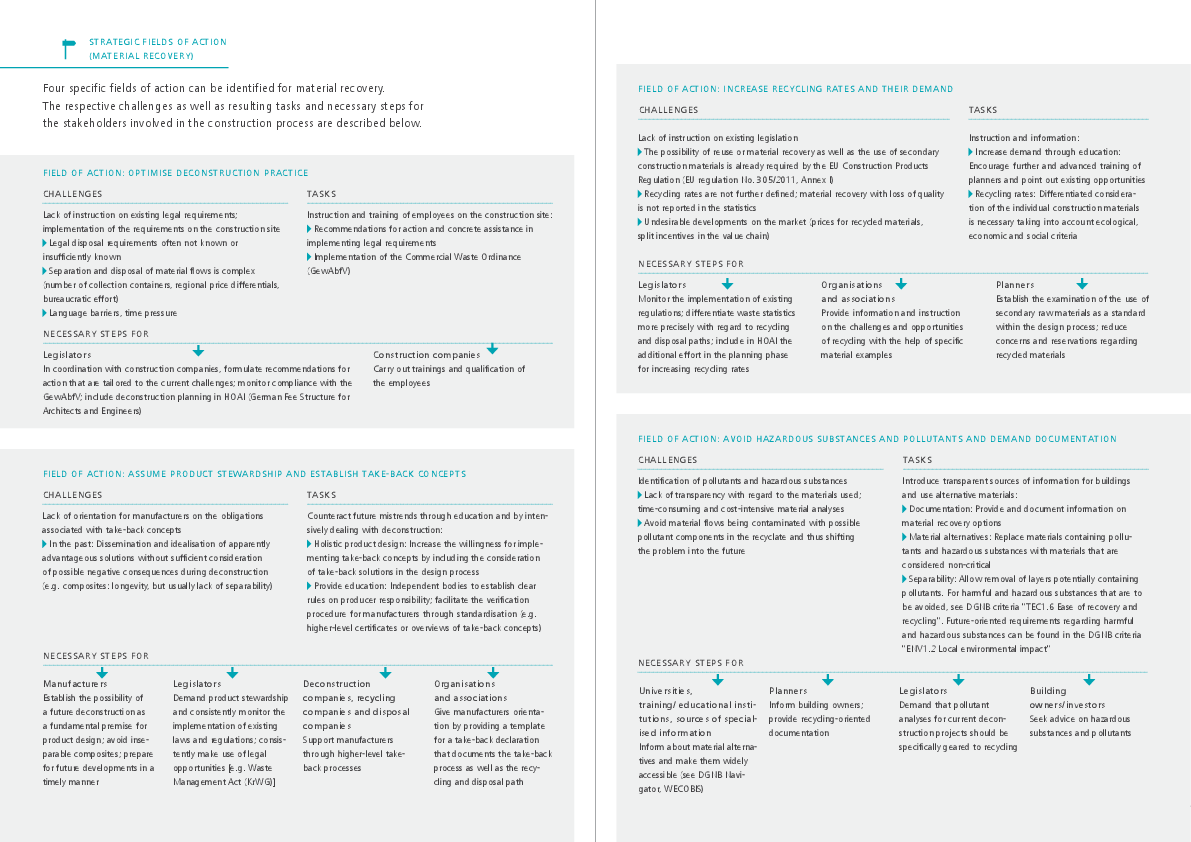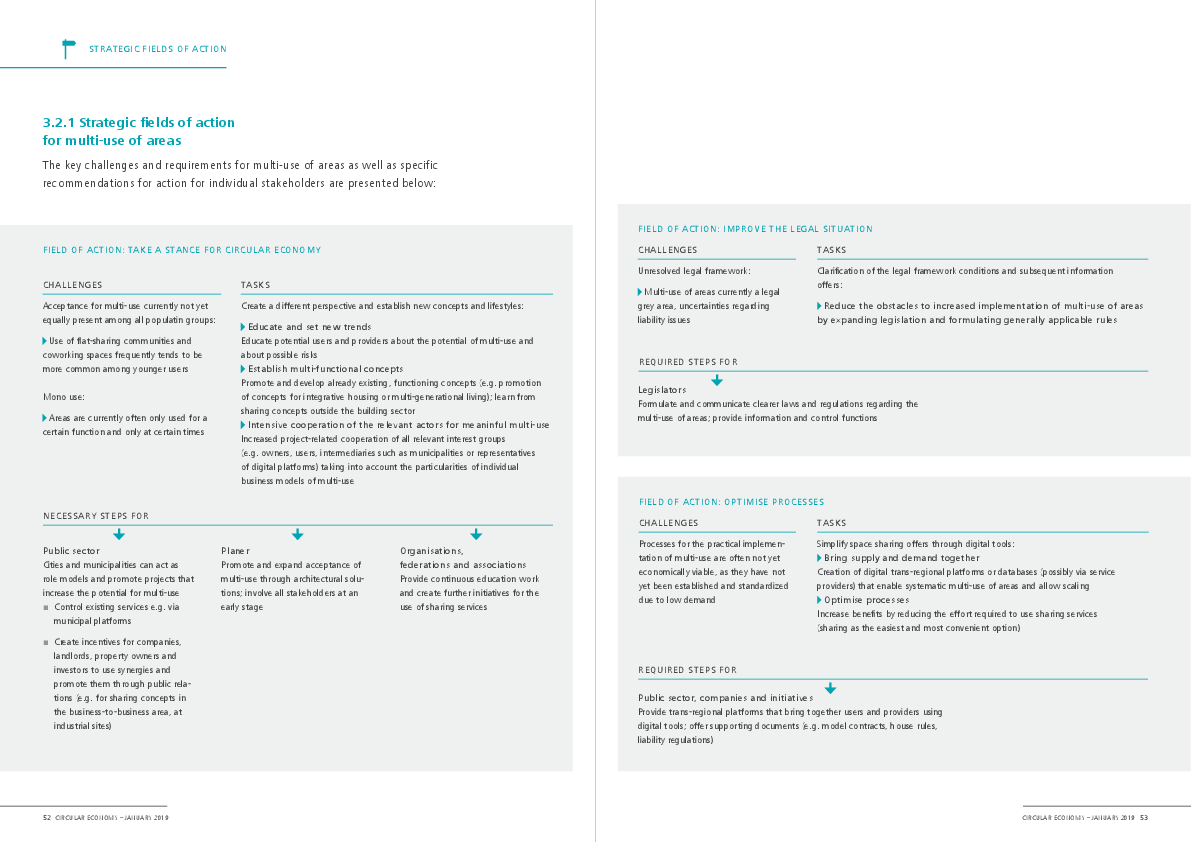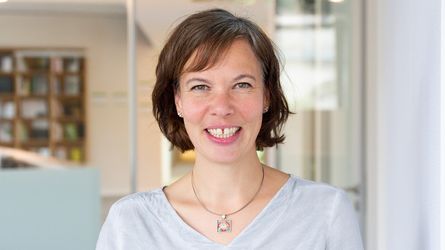Conversion and deconstruction-friendly planning
The reuse and recycling of building materials and components offer great potential in all three pillars of sustainability. Click here for a detailed overview.
Reuse
In practice, however, implementation is currently hampered primarily by the internal attitudes of those involved in the construction process and the building's users, who often still automatically associate used components with lower quality. Other barriers include uncertainty and lack of knowledge about the legal situation regarding the reuse of used components and building materials, and the fact that existing processes are often not yet economical and therefore not yet scalable. In addition, there is a problem of availability: the relevant materials or products are not always available in the required quantity and quality.
Three concrete fields of action for reuse can be identified:
- Take a stance for Circular Economy
- Improve the legal situation
- Optimise processes
The challenges and the resulting tasks and steps for the actors involved in the construction process are presented below:

Material Recovery
When a building loses its original function, deconstruction takes place. If the components/parts/construction products cannot be reused, recycling is a possible scenario. In order to enable subsequent reuse or recycling, construction and demolition waste must be collected and transported separately in accordance with the Commercial Waste Ordinance.
Four specific areas of action can be identified for material recovery:
- Optimise deconstruction practice
- Assume product stewardship and establish take-back concepts
- Increase recycling rates and their demand
- Avoid hazardous substances and pollutants and demand documentation
The challenges and the resulting tasks and steps for the actors involved in the construction process are presented below:

Multi-use of areas
Like many other Circular Economy approaches, dividing areas is not a new idea, but is already accepted and widespread in many areas of everyday life. The motivation for multiple use can arise, for example, for reasons of efficiency, for example when common infrastructure and supply areas such as kitchens or sanitary facilities only have to be created once and care and maintenance can be divided among the users. However, social aspects can also play a role if social contacts are established through the joint use of areas, if the neighbourhood is revitalised by longer periods of use and greater diversity, and if there is a stronger exchange with the social environment.
The DGNB has promoted the multi-use of areas in its certification system right from the start. Measures to increase the accessibility of buildings (e.g. publicly usable open-air facilities at the building, publicly accessible catering facilities or the letting of premises to third parties) and to increase the variety of uses ensure that the daily useful life of the building is extended and that more people can participate in the use of the building. This in turn promotes user identification with the neighbourhood and the built environment. The 2018 version of the DGNB System also rewards the multi-use of areas with two circular economy bonuses.
Read more about the potential and limitations of the multi-use of areas.
What are the key challenges and requirements for multi-use of land?
The following fields of action can be derived:
- Take a stance for Circular Economy
- Improve the legal situation
- Optimise processes

Your contact


